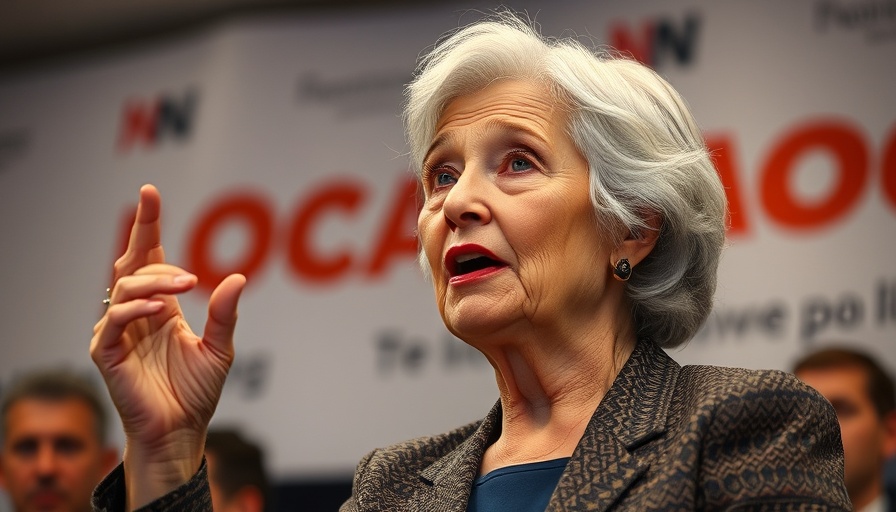
Pharmaceutical Giants Under Fire for Tax Strategies
In a recent move to hold major pharmaceutical companies accountable, Democratic lawmakers are challenging Pfizer, Johnson & Johnson, Merck, AbbVie, and Amgen over their low federal tax bills. Despite generating substantial profits—tens of billions of dollars annually—these companies allegedly engaged in practices that have allowed them to virtually avoid U.S. taxes. The letters sent by Senator Elizabeth Warren and Representative Jan Schakowsky heighten the scrutiny of these companies as the Senate navigates discussions around extending tax cuts proposed under Trump’s administration.
Tax Loopholes and Their Impact
The accusations are part of a broader narrative concerning corporate tax avoidance in the U.S. According to Warren and Schakowsky, these pharmaceutical giants have shifted profits to offshore subsidiaries in low-tax jurisdictions such as Bermuda and Ireland. This practice was facilitated by the 2017 Tax Cuts and Jobs Act, designed to decrease corporate tax avoidance but instead has seemingly enabled companies to exploit the tax code for their benefit. The lawmakers argue that this not only deprives the U.S. government of revenue but also contributes to higher drug prices for American consumers.
A Closer Look at Lobbying Practices
The letters also raise concerns about the hundreds of thousands of dollars these companies have spent on lobbying efforts. Lawmakers are questioning whether this money was used to advocate for tax breaks that ultimately benefit the wealthy pharmaceutical corporations while the average American bears the cost in the form of inflated healthcare prices. Understanding the intersection of lobbying and taxation is essential for citizens wanting to grasp how corporate interests can influence federal policy.
Historical Context of Corporate Taxation in America
To fully appreciate the implications of these actions, it’s vital to understand the historical context of corporate taxation in the United States. Over the last few decades, there has been a shift towards favoring corporations with a lower tax burden, which critics argue creates income inequality. An examination of previous tax legislation reveals a trend that prioritizes corporate interests, often at the expense of the average worker left holding the tax bill.
Future Predictions: Will Change Come?
As public scrutiny on corporate taxation grows, one must consider the potential impact of these allegations. Will lawmakers push for more robust tax regulations that close loopholes and ensure a fair tax contribution from these companies? As discussions in Congress continue, this challenge could resonate in upcoming elections where healthcare continues to be a critical issue.
Counterarguments and Diverse Perspectives
While Democrats are vocal about the need for reform, some might argue that pharmaceutical companies play a pivotal role in innovation. They claim that lower taxes allow for greater investments in research and development, which ultimately results in breakthroughs in medication that benefit society. Balancing these interests while ensuring fair tax contributions is a complex challenge that requires nuanced discussions among policymakers.
What This Means for You, the Consumer
This debate over pharmaceutical corporate taxes isn’t just a Washington issue; it affects consumers nationwide. The high price of medications directly correlates to the practices employed by pharmaceutical companies. Understanding these dynamics empowers consumers to advocate for fair practices, potentially influencing legislation that could alleviate the financial burden of healthcare.
Taking Action: Your Voice Matters
As citizens, advocating for transparency in corporate taxation and pushing for fair pricing can lead to substantial changes in healthcare policy. Engaging with local representatives, participating in advocacy groups, and raising awareness in our communities can help shine a light on this critical issue. Together, individuals can challenge the powerful interests that shape our healthcare landscape.
In Conclusion
The ongoing scrutiny of pharmaceutical companies by lawmakers highlights essential questions about corporate responsibility and taxation. As discussions progress, consumers should remain informed and engaged, understanding the implications of corporate practices on drug pricing and healthcare access.
 Add Row
Add Row  Add
Add 




 Add Row
Add Row  Add
Add 

Write A Comment